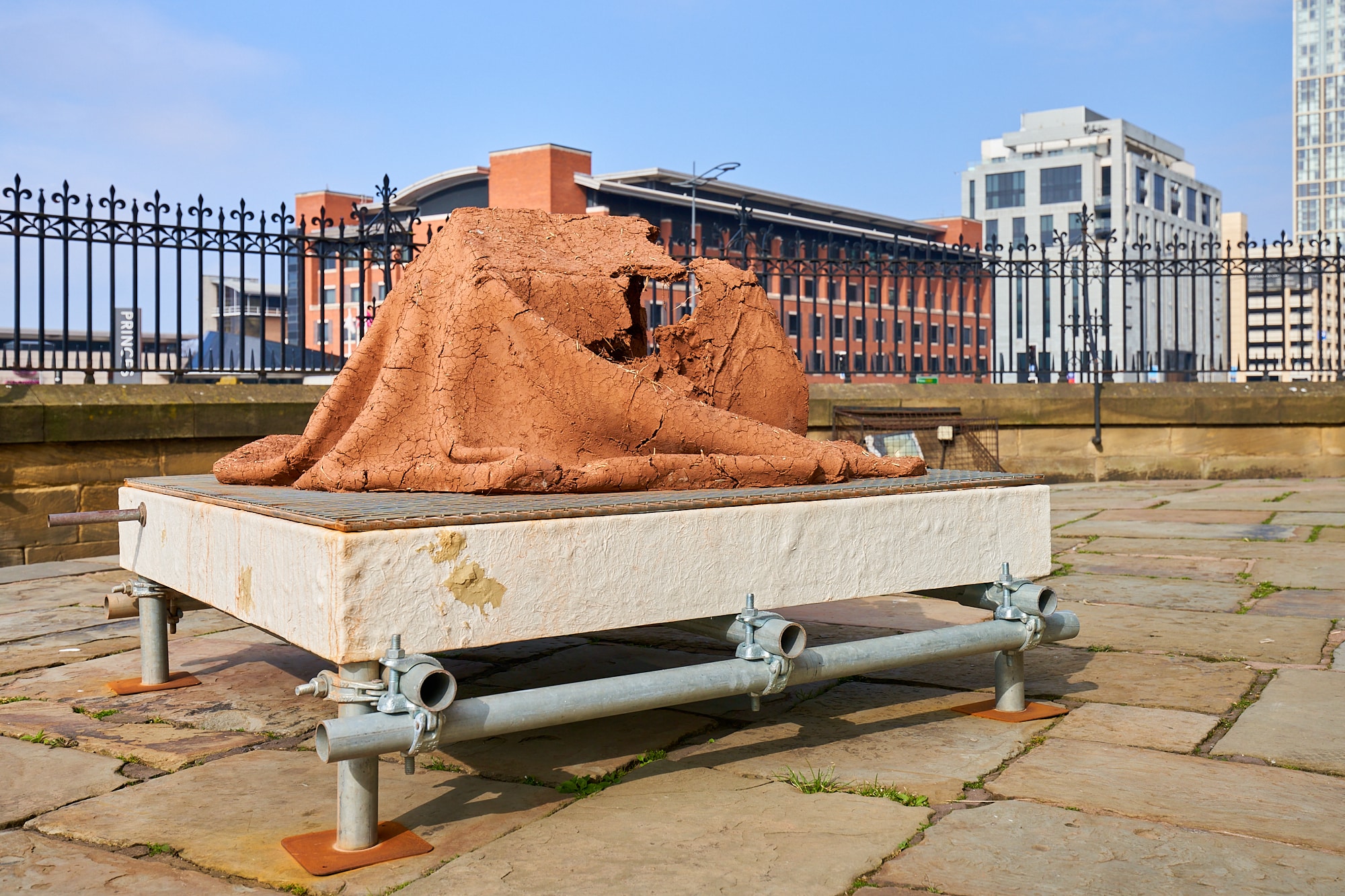|

For this installation, Pangaea worked with our client to produce a series of sculptures of shelters made from mycelium, Portland stone and cob. This offered an innovative way to bring together concerns around sustainable development through the material explorations and platform of contemporary sculpture.
Three models of shelter-like forms, each expertly crafted from natural materials, operate as sculptural works as well as material investigations. Drawing on a number of different technical approaches from stone carving, to mycelium cultivation, to digital modelling, this installation harnesses the power of nature, bringing together traditional practices with cutting-edge techniques to examine sculpture as a space of possibility and transformation. Even after exhibition, the artworks remain in a state of flux and continue to transform, formed from materials with varying properties and states of permanence.
Over the past few years, the notion of sustainable art has grown considerably, making a number of efforts to increase the awareness of key issues regarding the social and environmental impact. Contemporary Sculpture is quickly becoming a part of these efforts, with ‘Camp, Do We Go Around the Houses, or Do Houses Go Around Us?’ returning us to a focus on material and why it matters.
Clay & Straw Shelter
Clay is a plentiful natural resource and often a waste, or by-product, from infrastructure projects. Akin to a cob structure, this shelter was inspired by the use of earth and straw around the world to make dwellings, including British cob and thatching, Egyptian mudbrick, Latin American quincha and African rammed earth.
Left unfired clay can be borrowed from the earth, reused and recycled. In this shelter we get the chance to witness this transformation process and observe the changing state of the material as the wet clay responds to its environment, drying and cracking over time.
The clay for this artwork was locally extracted from Newbold Comyn, Leamington Spa, the site of an old brickworks. Similar clay deposits can be found in Coventry. The last remaining brickworks in the city was Webster Hemming and Sons, on Stoney Stanton Road. The factory closed in the mid 1990s, with the company surviving the compulsory purchase by the Council of its clay hole for 10 years by importing Rosemary clay from Cannock.